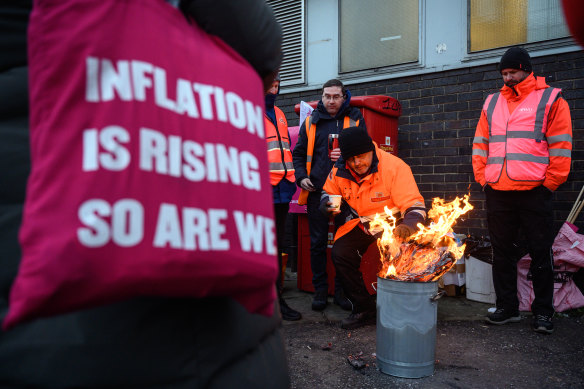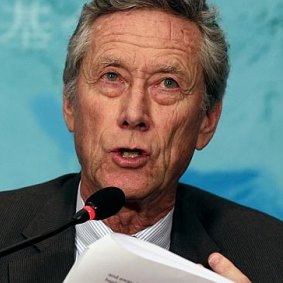Think outside the box: Inflation remedy triggers heavyweight showdown
Never let it be said economists don’t know how to party. Just hours from the clock striking midnight on New Year’s Eve, a former chief economist at the International Monetary Fund, Olivier Blanchard, kicked off a party among his 135,900 Twitter followers which continues to rage.
A few days later, Nobel laureate and New York Times columnist Paul Krugman invited his 4.5 million followers to the intellectual party with his own series of tweets, and the debate continues to spread.
The theme of the party? Identifying the real root cause of today’s current high inflation and – falling naturally out from that – all the myriad policy tools, besides interest rates, which could yet be deployed to bring rampant price pressures to heel.

Of course, everyone knows central banks are entirely responsible for inflation outcomes in the economy, right? Through their month-to-month management of so-called ‘demand’ in the economy – essentially how much households and businesses have to spend – central bankers either curb price pressures by raising borrowing costs, or, conversely, ignite prices by lower borrowing costs.
Other forces also play a role in short-term price movements. Russian leader Vladimir Putin, for example, is largely to blame for the recent price spikes in some energy and food prices. COVID didn’t help either, creating supply shortages for some goods and boosting shipping costs.
But these are largely so-called ‘first round effects’. Managing how these price shocks flow through into other consumer prices more broadly – so-called ‘second round’ effects – is the job of the central bank.
That’s the usual story, anyway.
But it’s one that economists – like Blanchard – are increasingly questioning, particularly when the cost of such a central bank-heavy approach could be a series of job-destroying recessions in major economies.
The alternative way to think about who controls inflation and how to deal with it is to remember, as Blanchard writes, that: “Inflation is fundamentally the outcome of the distributional conflict, between firms, workers, and taxpayers.”

When economies run hot, workers demand higher wages. Meanwhile, firms use what pricing power they have to jack up prices.
Viewed in this way, we’re all – employers, employees, not to mention governments who set the rules for such conflicts – a bit to blame for the spread of higher prices.
Given the breadth of the forces in play in creating inflation, Blanchard’s main point is that there are actually many potential strategies to beat inflation than most people imagine: “The state can play various roles. Through fiscal policy, it can slow down the economy and eliminate the overheating. It can subsidise the cost of energy…[and] finance the subsidies by increasing taxes on some current taxpayers, say exceptional profit taxes.”
Of course, many governments, including Australia’s, are already doing some of that, most notably through either energy price subsidies or price caps. But they could go much further in designing innovative solutions to curb price pressures, in Blanchard’s reckoning.
Overall, however, Blanchard is not optimistic these alternative policies will happen: “Unfortunately, this requires more trust than can be hoped for and just does not happen.”
Krugman, however, arrives at a more optimistic conclusion in his series of tweets, which begins with this cracker metaphor: “One way to think about inflation is that it’s like a sports event where everyone stands up to get a better view of the action — which is collectively self-defeating.”
Putting economies in to a recession to curb inflation is, then, ‘like stopping the action on the field until everyone sits down again’. “It works, but at a cost,” concludes Krugman.
Far better if we could simply persuade everyone to just sit down again: “That’s hard to achieve, but not always impossible.”
Should inflation pressures prove more long-lasting than anticipated, there are alternative tools in the macroeconomic toolkit that could be used to slow the rapidly rising cost of living.
Krugman cites the deflationary policies of Israel in the 1980s. In an Australian context, the most obvious example would be the similar era ‘Accord’ struck between unions and employers to curb inflation.
Seen in this light – that prices in our economy arise out of the power balance between what consumers are willing to pay and what firms are able to charge – a multitude of potential solutions present themselves to our present inflationary woes.
On the consumer side, wages can be constrained by agreement between unions and employers, should they look to be out of control (which is not the case in Australia currently).
On the firm side, governments could design policies to curb the pricing power of businesses, particularly those dominated by a handful of powerful players.
More broadly, governments could commit to a new era of competition-enhancing reforms to constrain the pricing power of firms in industries where competition is lacking – such as energy companies, but also supermarkets, pharmacies and many others.
Of course, there are limits to what governments can do with such reforms. Monetary policy remains a sharp and ready-made tool to curb inflation.
But it’s heartening to think that, should inflation pressures prove more long-lasting than anticipated, there are many more alternative tools in the macroeconomic toolkit that could be used to slow the rapidly rising cost of living.
This particular macroeconomic party is only just getting started.
The Business Briefing newsletter delivers major stories, exclusive coverage and expert opinion. Sign up to get it every weekday morning.
Most Viewed in Business
Source: Thanks smh.com